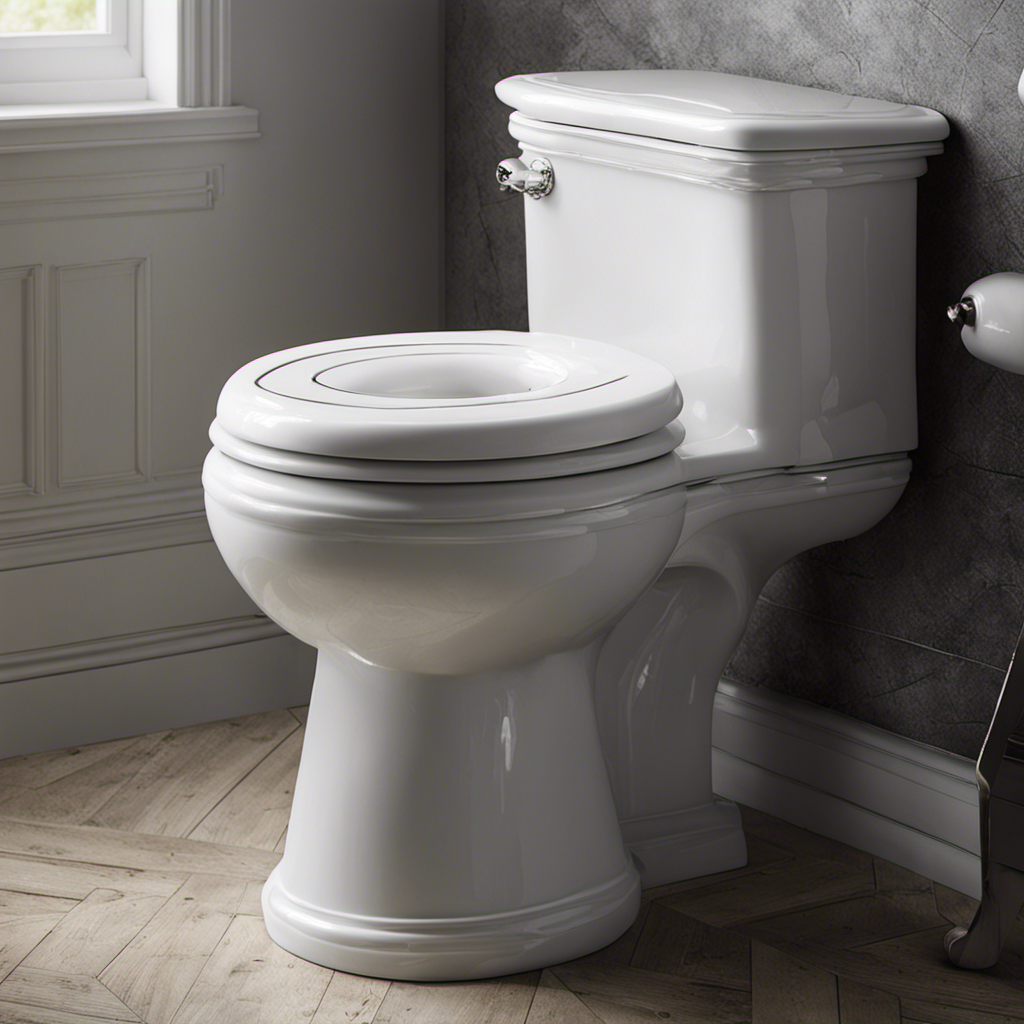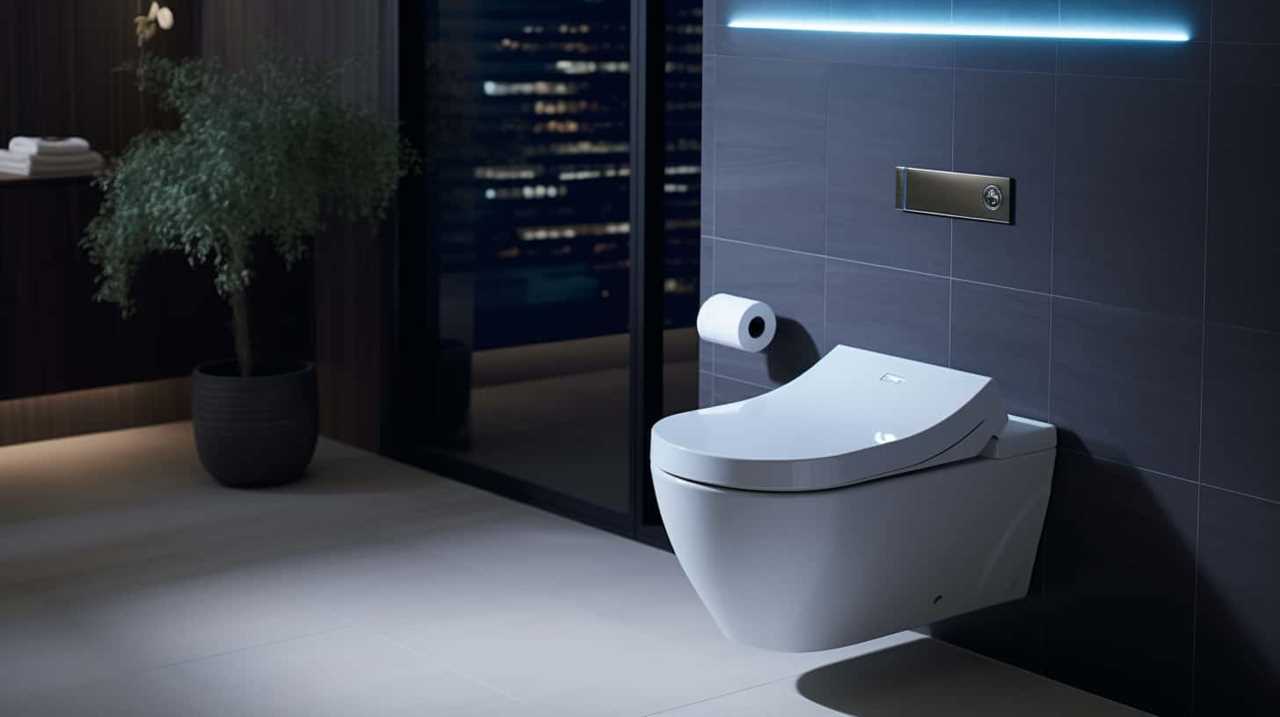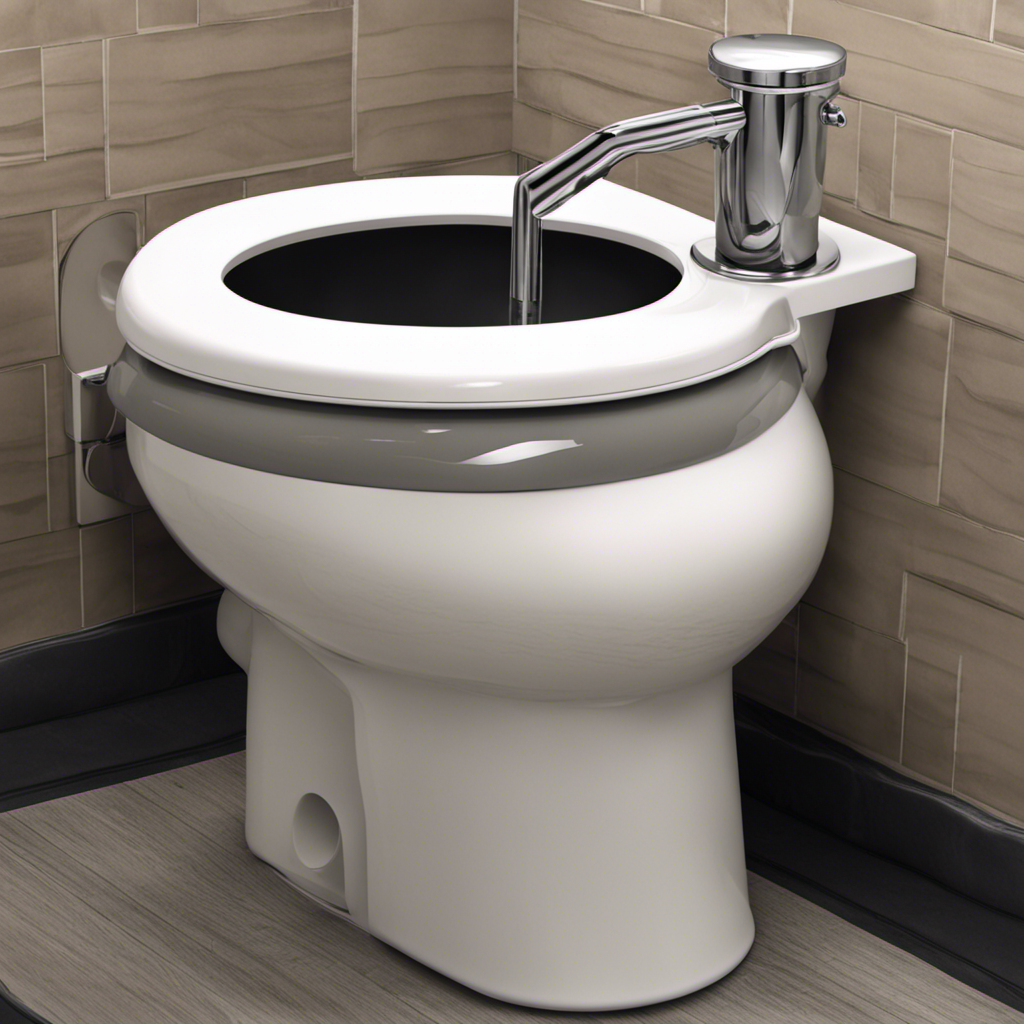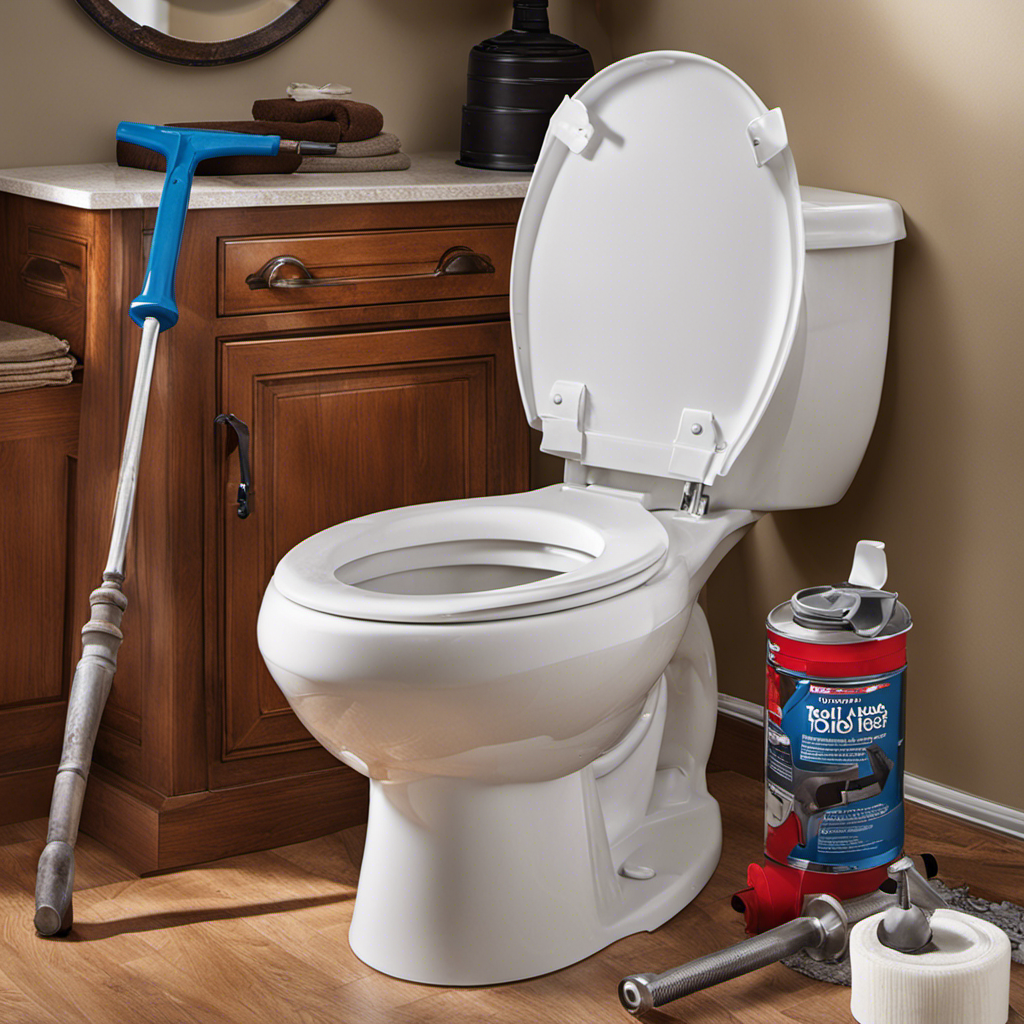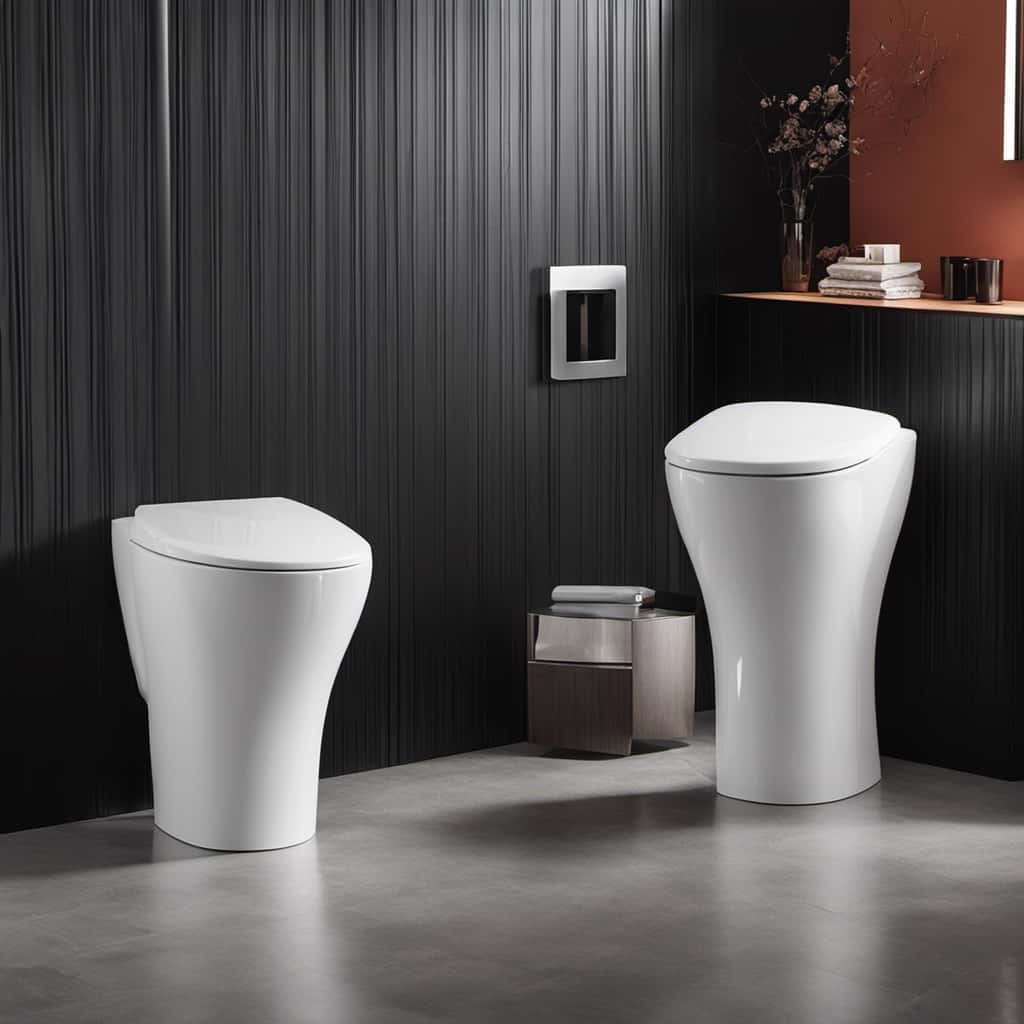As I flushed the toilet the other day, I was startled by an unexpected high-pitched whine. It got me thinking about how even the simplest of objects can have hidden complexities.
In this article, we will delve into the common causes of a whining toilet when flushed, providing you with troubleshooting steps and preventive measures. Whether you’re a DIY enthusiast or prefer to call a professional plumber, we’ve got you covered.
Let’s unravel the mystery behind that unsettling whine and restore the peace in your bathroom.
Key Takeaways
- Common causes of toilet whining when flushed include a faulty fill valve, worn-out or damaged washer inside the valve, obstruction in the water supply line, and a loose or damaged flapper valve or ballcock assembly.
- Troubleshooting steps for a whining toilet include checking the water supply valve, inspecting the fill valve and float assembly, looking for leaks or loose connections, adjusting the float to the correct position, and considering replacing the fill valve or float assembly.
- Steps to fix a whining toilet include ensuring the water supply valve is fully open, inspecting the fill valve for leaks or loose connections, adjusting the water level in the tank, and replacing the flush valve if necessary.
- Preventive measures for a whining toilet include regularly inspecting the fill valve and flush valve, checking the water level in the tank, cleaning jets and siphon holes, replacing worn-out flapper, and testing the flush handle for smooth operation.
Common Causes of Toilet Whining When Flushed
One of the most common causes of a toilet whining when flushed is a faulty fill valve. The fill valve is responsible for refilling the tank with water after each flush. When the fill valve malfunctions, it can result in a high-pitched whining noise that can be quite annoying.
This noise is often caused by a worn-out or damaged washer inside the valve, which causes water to flow through a smaller opening, creating turbulence and vibration. Other possible causes of toilet whining include an obstruction in the water supply line, a loose or damaged flapper valve, or a worn-out ballcock assembly.
Identifying the exact cause of the whining noise is crucial in order to effectively troubleshoot and resolve the issue. Now that we understand the common causes of toilet whining, let’s move on to how to troubleshoot a whining toilet.
How to Troubleshoot a Whining Toilet
To troubleshoot a whining toilet, you can start by checking the water supply valve. Make sure it is fully open and allowing enough water to enter the tank. If the valve is not the issue, the next step is to inspect the fill valve and float assembly. These components control the water level in the tank and can cause whining noises if they are not functioning properly. Check for any leaks or loose connections, and adjust the float to the correct position. If the problem persists, it may be necessary to replace the fill valve or float assembly. Remember to always turn off the water supply before making any repairs. By following these steps, you can fix a noisy toilet and restore peace and quiet to your bathroom.
| Potential Issue | Possible Solution |
|---|---|
| Water supply valve not fully open | Open the valve fully |
| Faulty fill valve | Replace the fill valve |
| Misaligned float assembly | Adjust the float position |
Steps to Fix a Whining Toilet
Check if the water supply valve is fully open and if not, make sure to open it completely. This is the first step in fixing a whining toilet.
Once the water supply valve is fully open, follow these steps to fix the toilet noise:
-
Inspect the fill valve: The fill valve is responsible for refilling the tank after each flush. If it is faulty or worn out, it can cause the whining sound. Check for any leaks or loose connections and replace the fill valve if necessary.
-
Adjust the water level: Sometimes, an incorrect water level can lead to a whining sound. Adjust the water level in the tank to the recommended height using the adjustment screw or float.
-
Replace the flush valve: If the whining sound persists, the flush valve may be the culprit. Over time, the flush valve can deteriorate, causing vibrations and noise. Replace the flush valve with a new one to eliminate the whining sound.
Preventive Measures for a Whining Toilet
Make sure you regularly inspect the fill valve and flush valve for any signs of wear or damage to prevent a whining sound in your toilet. Proper toilet maintenance is essential to avoid costly repairs and maintain optimal performance. Here are some important toilet repair tips to keep in mind:
| Toilet Maintenance Tips | Benefits |
|---|---|
| Regularly inspect fill valve and flush valve | Prevents whining sound |
| Check water level in tank | Avoids overflow issues |
| Clean jets and siphon holes | Ensures proper flushing |
| Replace worn-out flapper | Prevents water leakage |
| Test flush handle for smooth operation | Avoids flushing problems |
When to Call a Professional Plumber for a Whining Toilet
If your toilet continues to make a whining sound even after trying basic troubleshooting steps, it may be time to call a professional plumber. Here are some signs of a serious plumbing issue that requires expert attention:
-
Persistent whining noise: If the whining sound persists even after you’ve checked the fill valve, flapper, and water supply line, it could indicate a more significant problem, such as a damaged or worn-out component.
-
Water leaks: If you notice water pooling around the base of your toilet or on the floor, it could be a sign of a cracked toilet bowl or a faulty wax ring. These issues can cause serious water damage if left unaddressed.
-
Recurring clogs: If your toilet frequently clogs, even after using a plunger or drain cleaner, it could indicate a blockage deep within the plumbing system. A professional plumber can help locate and remove the obstruction.
Regular toilet maintenance is crucial in preventing these serious plumbing issues. It’s recommended to have your toilet inspected and serviced by a professional plumber at least once a year to ensure its proper functioning and to catch any potential problems early on.
Frequently Asked Questions
Can a Whining Toilet Affect the Overall Water Pressure in the House?
A whining toilet can potentially impact the overall water pressure in the house. This can lead to reduced water flow and potential damage to plumbing systems. It is important to address the issue promptly to prevent further complications.
Is It Safe to Continue Using a Whining Toilet or Should It Be Immediately Fixed?
It’s important to address a whining toilet as soon as possible to avoid potential issues. While it may be safe to continue using it, there are pros and cons to consider. Troubleshooting methods can help identify the underlying problem.
Can a Whining Toilet Lead to Higher Water Bills?
A whining toilet can potentially lead to higher water bills due to its higher water consumption. This constant noise indicates a potential water waste issue that should be promptly addressed to avoid unnecessary expenses.
Are There Any Environmentally-Friendly Solutions for Fixing a Whining Toilet?
There are eco-friendly solutions available for fixing a whining toilet. DIY repairs can be done to address the issue, such as adjusting the water pressure or replacing worn-out parts.
Can a Whining Toilet Be an Indication of a More Severe Plumbing Issue in the House?
Yes, a whining toilet can indicate a more severe plumbing issue in the house. It could be caused by a faulty valve or water pressure problem. Regular maintenance and prompt repairs can prevent toilet whining in the future.
Conclusion
In conclusion, a whining toilet can be a nuisance, but it can usually be resolved with some troubleshooting and basic repairs. By identifying common causes such as a faulty fill valve or a worn-out flapper, homeowners can take the necessary steps to fix the issue.
For example, John, a homeowner in New York, experienced a whining toilet that was due to a loose water supply line. He was able to tighten the connection and eliminate the whining noise completely.
However, if troubleshooting doesn’t work, it is important to call a professional plumber to avoid further damage and ensure a properly functioning toilet.
